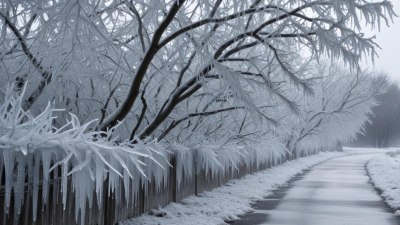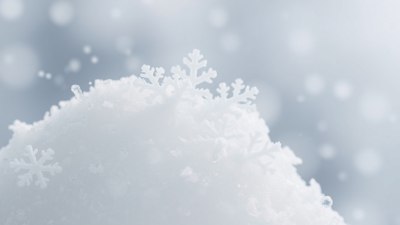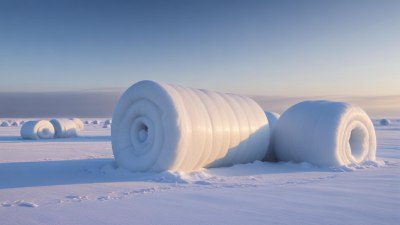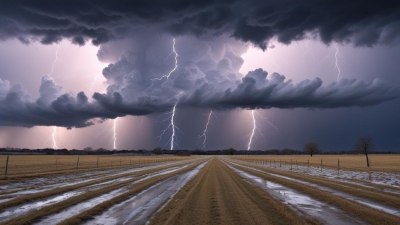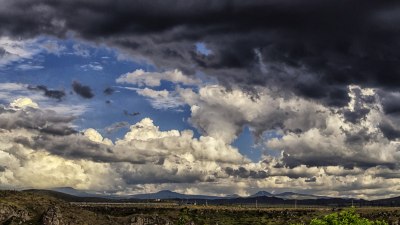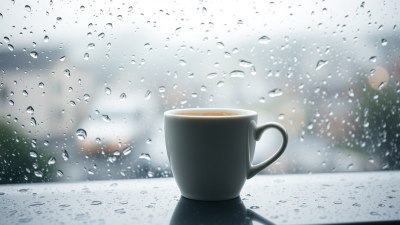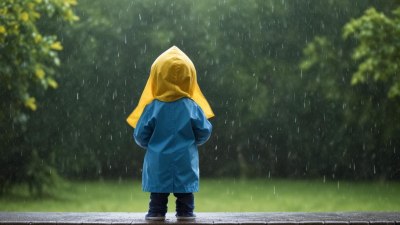Why Snow Is Quieter Than Rain
Explore the science behind why snow produces less noise than rain, including atmospheric effects and surface interactions.
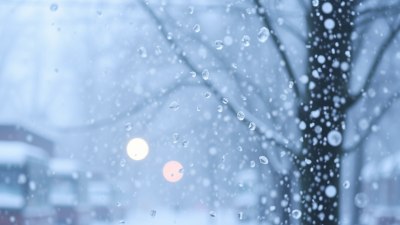
Image created with Flux Schnell
Snow and rain are two common forms of precipitation that affect our environment in different ways, not only visually but also acoustically. Many people have noticed that snowfall tends to create a quieter ambiance compared to rainstorms, which often come with loud pattering and splashing sounds. This difference in sound quality arises from a combination of physical properties of snow and rain, as well as the way these precipitation types interact with surfaces and the surrounding atmosphere. Understanding why snow is quieter than rain involves exploring the physics of sound absorption, the structure of snowflakes, and the acoustics of different weather conditions.
The Basics of Precipitation Acoustics
When raindrops hit the ground, rooftops, or any objects, they generate sound waves by rapidly transferring kinetic energy to the surface. These impact sounds are usually sharp, rhythmic, and consistent, creating the familiar drumming noise associated with a rainstorm. By contrast, snowflakes generally fall more gently due to their lower density and unique structure, resulting in softer impact sounds or even near silence.
Sound generation depends largely on the size, speed, and composition of the falling precipitation. Raindrops are liquid water droplets with a relatively simple spherical shape and fall at high terminal velocity, often between 2 and 9 meters per second depending on their diameter. This high-speed impact on solid surfaces causes noticeable splashing and reverberation. Snowflakes, however, are aggregates of ice crystals that have intricate, often fractal-like shapes. They fall at significantly slower speeds, typically around 1 meter per second or less, which reduces impact energy and hence the noise produced.
Snow’s Unique Structure and Sound Absorption
Snowflakes are not solid spheres but complex, loosely packed clusters of ice crystals, often with open, airy structures. When snow accumulates on the ground, it creates a porous layer of loosely packed ice particles interspersed with air pockets. This porous structure is excellent at absorbing sound waves, much like acoustic foam used in recording studios.
The soft, fluffy surface of fresh snow can trap and dampen ambient noises by hindering sound reflection and scattering sound energy. As a result, sounds become muffled, and echoes from footsteps, distant voices, or environmental noises are reduced. This acoustic damping effect leads to a general impression of quietness during snowy conditions. Rain, on the other hand, does not accumulate in a manner that absorbs sound; water puddles even enhance sound reflection, making environments noisier.
Effect of Temperature and Atmospheric Conditions
Low temperatures associated with snowfall can also affect sound propagation. Cold air is denser and can reduce the speed of sound, influencing how sound travels. Additionally, temperature inversions common in winter conditions trap sound waves near the ground, but the porous snow cover still absorbs much of this energy, preventing loud noise propagation.
Moreover, humidity levels during snowfall tend to be different from those in rainstorms. Dry, cold air during snowfalls can attenuate sound differently than the warm, moist air typical during rain, affecting acoustic perception. The combined effects of snow cover and the winter atmosphere thus contribute to the quieter environment.
Comparing Impact Forces: Snowflakes vs. Raindrops
Analyzing the impact force generated by precipitation requires understanding the terminal velocity and mass of raindrops and snowflakes. Raindrops, being denser and heavier per unit volume, hit with much higher force compared to snowflakes, which are lighter and slower. This greater force results in louder impact noises.
If we consider a simplified physics model, the kinetic energy upon impact is given by 1/2 mv2, where m is mass and v is velocity. Raindrops may have smaller mass than some snowflakes but their velocity is much higher. The higher velocity squared term predominates, leading to more energetic impacts and thus more sound production. Snowflakes’ lower velocity and airy composition mean less kinetic energy is transferred to surfaces, reducing noise.
The Role of Surface Interactions
The nature of the surface where precipitation falls greatly influences the resulting sound. Rain falling on hard surfaces such as metal rooftops or concrete sidewalks produces loud, sharp sounds due to efficient sound reflection. Snow, usually landing on existing snow cover or soft ground, causes softer impacts and further muffles acoustics.
Additionally, snow can gradually fill in gaps and uneven surfaces, creating a smoother sound-absorbing layer. This means footsteps and other disturbances also produce gentler sounds, which is why walking on fresh snow is notably quieter compared to wet ground during rain.
Psychological Perception of Quietness
Human perception also contributes to the idea that snow is quieter than rain. The absence of the constant dripping, splashing noise characteristic of rain makes the environment feel more serene. The muffling effect of snow dampens high-frequency sounds that are more noticeable and disturbing to human hearing.
Furthermore, visual cues from snow-covered landscapes suggest calm and stillness, reinforcing the perception of quietness. This sensory combination creates a psychological state where people are more aware of silence or subtle sounds, contrasting the dynamic noise of rainstorms.
Scientific Experiments and Measurements
Acoustic research has measured sound levels during different forms of precipitation. Studies using sound level meters indicate that snowfall produces significantly lower decibel levels than rain of comparable intensity. Field recordings show that rain can generate noise levels exceeding 70 decibels, while light to moderate snowfalls often fall below 40 decibels.
Laboratory simulations using artificial snow and rain conditions confirm that snow’s structure and properties contribute to sound absorption. Research into materials inspired by snow’s porous, crystalline structure is ongoing for noise reduction technologies.
Implications for Urban and Environmental Planning
The quietness of snow impacts urban soundscapes and wildlife behavior. Winter environments with snow cover exhibit lower ambient noise, affecting animal communication, human comfort, and quality of life. Cities in snowy regions benefit acoustically from winter seasons, experiencing reduced traffic noise penetration and enhanced sleep quality in residential areas.
Designers and planners can utilize snow’s natural sound-dampening properties by incorporating green spaces and snow-retentive surfaces in urban layouts. Understanding snow’s acoustic effects also informs safety considerations during winter activities, where reduced noise may mask hazards.
Snow is quieter than rain due to several interrelated factors: the lower terminal velocity and lighter mass of snowflakes result in softer impacts; the porous and airy structure of snow absorbs and muffles sound waves; cold winter atmospheres modify sound propagation; surfaces covered in snow further reduce noise reflection; and psychological perception amplifies the sense of quiet. This unique combination creates the peaceful ambiance associated with snowy weather, contrasting with the dynamic acoustic environment produced by rain.
Exploring the physics and acoustics of snow and rain enhances our understanding of natural phenomena and contributes to innovations in soundproofing, environmental planning, and wildlife conservation.
